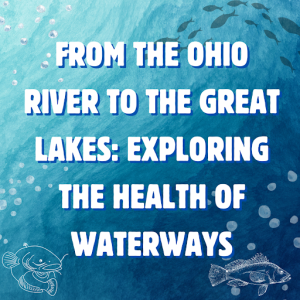From The Ohio River To The Great Lakes: Exploring The Health of Waterways
By Rowan Dunbar, C2ST Intern, University of Illinois Chicago
When I first moved to Chicago for college, I quickly realized the city’s love for outdoor recreation. Water plays a key part in how many Chicagoans spend their free time, from the Chicago Riverwalk to the beaches of Lake Michigan. However, I struggled to understand why my friends would want to walk the shoreline – much less swim in an unchlorinated body of water. I knew that Chicago’s drinking water comes from Lake Michigan and that Chicago has ‘good water,’ which means it is generally clean or safe, so why did this free body of water intimidate me so much? That is when I realized that the river I grew up by – its bank covered in broken glass, bottle caps, and cigarette butts – is home to one of America’s most polluted waterways – and is the only endangered river in Illinois: the Ohio River.

Continue reading “From The Ohio River To The Great Lakes: Exploring The Health of Waterways”




